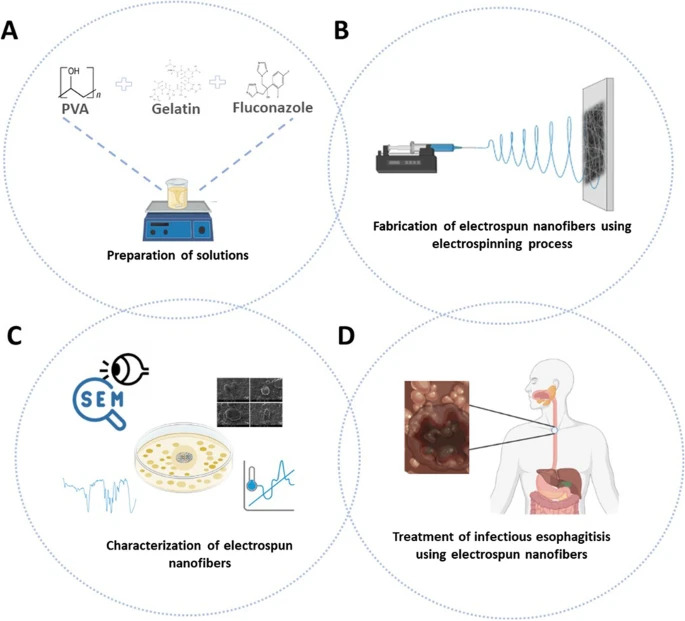Electrospun composite nanofibers for treating infectious esophagitis

The electrospinning technique enables the convenient fabrication of non-woven fibrous materials with excellent properties such as fine diameters, a large surface area per unit mass, high porosity, high gas permeability, and small pore sizes. Nanofiber applications in healthcare systems continue to be popular especially in recent years and are integrated with drug delivery systems in the treatment of diseases such as infectious esophagitis. For that reason, in this study, 13% polyvinyl alcohol (PVA), 0.5% gelatin (GEL), and 5, 10, and 15 mg of fluconazole (FCZ) were used to fabricate the drug-loaded nanofibers using the electrospinning method for local treatment of infectious esophagitis. The SEM images demonstrated the fibers’ homogeneous and beadless morphologies and the mean diameter of electrospun nanofibers ranged between 395±12 nm and 314±93 nm. With the addition of FCZ, the properties of electrospun nanofibers improved, and some shifts in FTIR peaks were observed. The thermal properties of the electrospun nanofiber were also improved, and the highest melting temperature of PVA was observed at 235 °C when the drug concentration was highest. The tensile strength of 13% PVA/0.5% GEL/15 FCZ electrospun nanofibers was the highest and resulted in 7.07±1.33 MPa. Moreover, the biocompatibility of electrospun nanofibers was tested on MSC cells, which were able to spread all over the electrospun nanofibers even on day 7, due to the biocompatibility of each electrospun nanofibers. In addition, the antimicrobial and drug release kinetics properties of the FCZ-loaded electrospun nanofiber patches were tested against S. aureus, S. agalactia, and C. albicans.
Read more
Koyun, M., Sulutas, R.B., Turan, Y. et al. Electrospun composite nanofibers for treating infectious esophagitis. emergent mater. (2023).
https://doi.org/10.1007/s42247-023-00533-9

